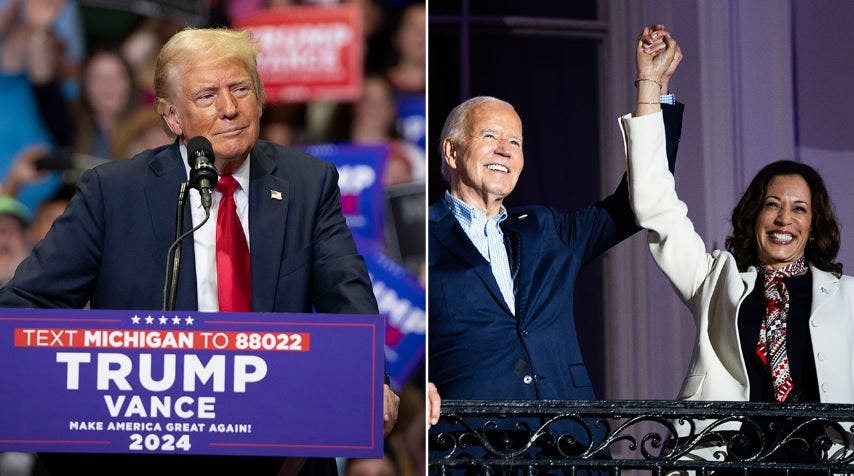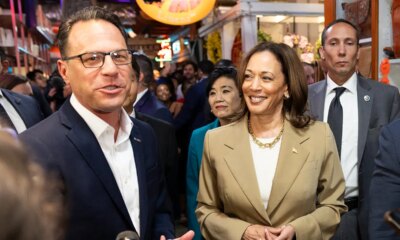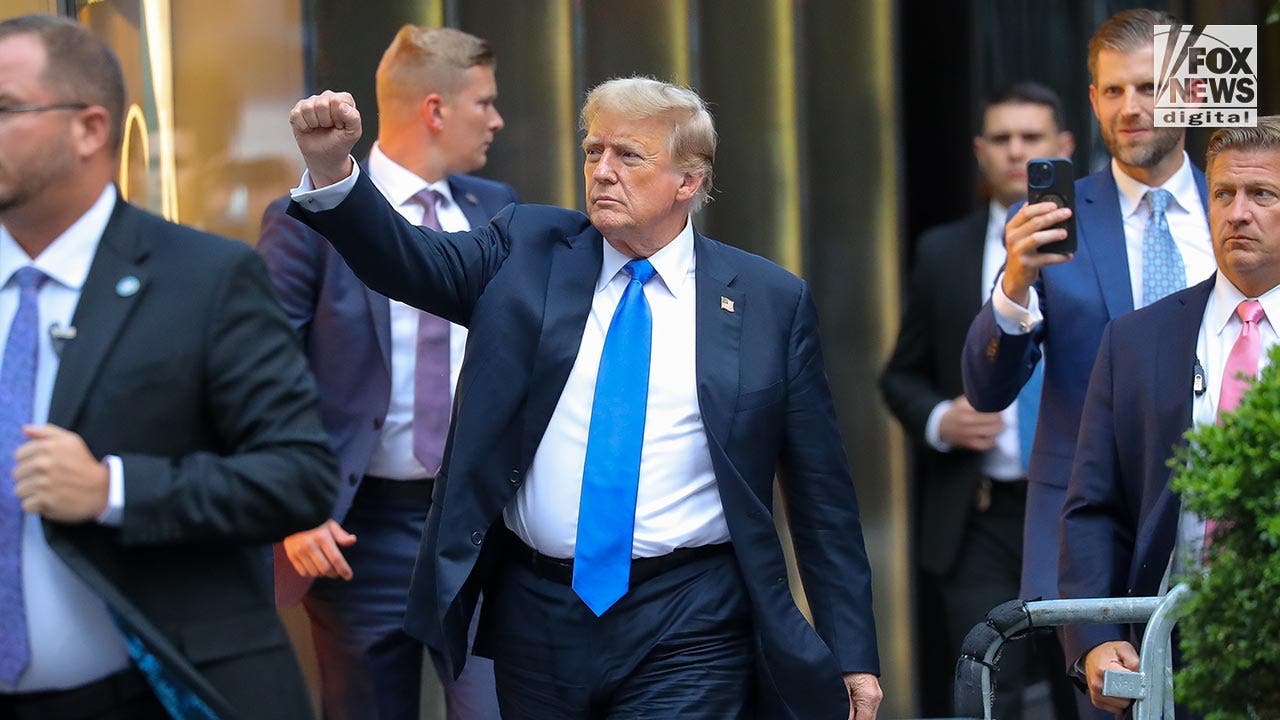Cleveland, OH
Price hikes to technology: Covid’s effects on consumer commerce are here to stay

CLEVELAND, Ohio – The coronavirus pandemic started, and continued, as a medical story, affecting all corners of the world. But it didn’t take long for its ramifications to cross into consumer commerce, creating a series of reactions in our lives – from how we shop, buy, dine out and watch entertainment.
We’re still feeling that impact.
The pandemic brought an increased awareness to germs – specifically how fast they spread in confined places like planes, veritable flying petri dishes.
Behind the scenes, businesses scrambled to adapt. Many of the changes they have kept, including an emphasis on cleanliness, a reliance on technology and an insatiable demand for customer convenience.
This is one in a series of stories by cleveland.com and The Plain Dealer exploring lasting changes from the COVID-19 pandemic with the end of the federal COVID-19 declaration on Thursday, May 11. Read related stories at this link.
The pandemic led to supply-chain issues, and resulting price increases are still forcing restaurant owners to question how much they can charge for certain items.
Chris Hodgson of Driftwood Restaurants and Catering keeps an eye on the bottom line – a never-ending cause of frustration.
“Education is still the hardest thing within our industry,” he said. “I think groceries went up 11% or 12% for people last year, but they don’t recognize that, and that doesn’t translate to the restaurant for them. You know, your brain still tells you a burger’s 12 bucks.”
But behind the scenes, away from the bar stools and tables, Hodgson sees this: Beef went up 5%. Dairy products soared with double-digit increases. Bulk purchase of fryer oil – what few diners would think of as they munch on a sandwich and fries – used to cost $50; now it’s $120, he said.
“Those prices aren’t coming down to us,” Hodgson said. “I mean, if I’m a fryer-oil producer and I’m charging you 120 bucks, and you’re paying it and everyone else is paying it, I’m not going to lower my price to $90.”
He added: “No one’s going to take the steps backwards, whether it’s the cattle rancher or anything else. Once you get the price, you set the price, and now people are paying. And until the demand stops, (they) don’t have to change the price of any of the products.”
Texas-based retail expert Rich Hollander is a managing partner in Axcelora, a business matchmaker firm that connects representatives between companies. He makes a living studying retail trends, consumer habits and challenges like supply-chain issues.
“With chips, (automakers) couldn’t build cars,” he said. “There was all kinds of pent-up demand. You saw used cars go way up.”
And consumers also have decided to live longer with certain goods, he said.
“Consumers have said, ‘I’ll put things off.’ Can I live with that cell phone another six months or another year as opposed to buying a new one every two years just out of habit? They did the same thing with cars – ‘I’m not driving that much because I am not going to the office every day.’ “
Giant Eagle embraced the online ordering and curbside pickup approach.Marc Bona, cleveland.com
Many people stopped driving to work, but store shopping remained.
Before Covid, the supermarket experience was pretty much what it had been for decades: Go to the store, buy what you want, leave. Giant Eagle already had been experimenting with curbside pickup.
Covid, said Giant Eagle spokesperson Jannah Jablonski, “really fast-tracked” customers’ interest in the service.
“We were ready to respond and grow at a substantial rate,” she said, “and we’ve continued to do so.”
The “online element to grocery shopping is here to stay, whether that is online ordering for pickup at your local store or for home delivery. We have just seen the interest that was sparked by Covid really take hold, and now it’s become part of the routine for a lot of our customers.”
And that’s the payoff for the Pittsburgh-based company with scores of stores throughout Northeast Ohio. It was a classic case of the cliché, “If you build it, they will come.” In this case, it’s more, “If you offer it, customers will embrace it.”
Jablonski said more than 30 stores were remodeled for user experience. Ordering sections were added along with coolers, freezers and other areas, based on demand. Now, Giant Eagle has curbside pickup/delivery in 103 of their supermarkets – about half of their locations. And the company had to implement it in a sustainable way.
“In the peak of the pandemic, the demand for these curbside pickup slots and home-delivery slots was so high, if we put everything in to meet that peak demand where would we be when that leveled out?”
Some stores embraced the pickup-ordering concept, said Hollander, who said he recently had lunch at a place where he saw 20 people waiting to pick up orders with only four people dining.
“Go to Chipotle,” he said. “Forty percent of Chipotle’s restaurant business is pickup. They’re actually changing the design of their stores. You don’t need as big a seating area if 40 percent of your business is going out the door.”
Target, he said, is a good example of a company using pickup deftly.
“It’s nothing for them to do two or three hundred pickups a day. Target’s really good at it,” he said.
It comes down to handling business practices spawned because of Covid.
“We have seen so many changes throughout the pandemic,” Jablonski said. “At first we saw panic buying. That put our logistic teams to the test to figure out how to get increased inventory to store as fast as possible.”
Jablonski also sees feedback from customers about their in-store experience. That means high levels of sanitization helps people “feel good about shopping in our stores when they were hesitant to go to a lot of places outside their homes.” Those hand-sanitization sprays and wipes remain as common in stores as salt and pepper shakers in restaurants.
Stores like Giant Eagle also had to balance a relationship with state health authorities when it came to issuing vaccines via pharmacies.
“We’re excited to be on the other side of that,” she said, “but who knows what the future holds?”
Scanning QR codes is one of the direct, and remaining, effects the coronavirus pandemic had on consumers.

When it comes to technology, the future is here.
That’s felt by the millions who cross the turnstiles at Cleveland stadiums and arenas. With Covid, cashless options became a way to avoid contact. Now it’s common to go into Rocket Mortgage FieldHouse and never touch a dollar bill. Cash is not king anymore.
“I don’t think you’ll see it coming back,” Hodgson said.
Aramark General Manager Adam Zann said the roots for cashless operations date back more than 10 years with mobile ordering – “ways to not stand in line,” he said.
“That part never really took off, at least not in venues,” Zann said, adding it found its groove for residential and office use with delivery services like Uber Eats. “But the two- to three-hour venue experience just never really translated to it. As Covid came along, we started to do our re-openings. If we’re trying to be as clean and sanitary as possible, let’s talk about cash because obviously it’s one of the dirtiest things out there.”
Then, he said, self-checkout technology began to improve.
Mashgin might have been a foreign concept to many consumers just a few years ago, but now it has become de rigueur to walk into a kiosk, grab a drink, place it on the scanner, punch in your credit card and out you go – back to your seat.
Zann said self-checkout at grocery stores led to “a more natural adoption for our consumer as well. When you come to games you say, ‘Oh, I know how to do this, I do this all the time at the grocery store.’ “
Self-checkout – not self-ordering – “really moved the needle for us.”
It also translates financially: A Symon’s Burger Joint in the arena was converted from self-order to self-checkout, Zann said. Result: Sales have almost doubled. Same menu, same number of workers.
“We just flipped how that stand ran,” he said.
The consumer impact also has a financial component: People pay a lot of money for tickets, so if you want to watch a game, the contactless approach gets you back to your seat faster. Who wants to be in line when Donovan Mitchell starts shooting the lights out?
Zann cites the Intuit Dome, the planned home for the Los Angeles Clippers, as an example of a “completely seamless, frictionless experience where you don’t really interact with people. … It’s not even self-checkout; it’s Amazon Go, it’s Amazon Just Walk Out technology (using) facial recognition and camera technology to capture what people are taking.”
He admits that’s a bit of a “pipe dream” but adds, “It’s hard to say where it’s going to go because it’s come so far just in the last three, four years.”
Hodgson also sees a financial savings from a cashless approach. He said a business going cashless results in less theft. The need for cash-based businesses to hire auditors – which can cost upwards of $90,000 annually – diminishes. And any nervous reliance on a young employee to carry night deposits to a drop box goes away.
Cash is being relegated to an “old-school mentality in restaurants,” he said.
Other technological effects include the proliferation of QR codes in restaurants, where diners don’t get a physical menu; they scan the business’s black and white, maze-like code and have the menu pop up on their phone. It’s an alternative to handling grimy menus.
When a server does saunter by, consumers still expect good service, Hodgson said. Meanwhile, as the pandemic tore through the restaurant industry, workers left the business. Salaries went up for those willing to be a dishwasher, cook – whatever a restaurant needed.
“Prior to the pandemic cooks cooked for 12 bucks an hour,” he said. “After the pandemic, cooks are cooking for 33% more. And the consumer just doesn’t understand that.
“And it’s a very hard thing because it came so fast.”
I am on cleveland.com’s life and culture team and cover food, beer, wine and sports-related topics. If you want to see my stories, here’s a directory on cleveland.com. Bill Wills of WTAM-1100 and I talk food and drink usually at 8:20 a.m. Thursday morning. Twitter: @mbona30.
Get a jumpstart on the weekend. Sign up for Cleveland.com’s weekly “In the CLE” email newsletter, your essential guide to the top things to do in Greater Cleveland. It will arrive in your inbox on Friday mornings – an exclusive to-do list, focusing on the best of the weekend fun. Restaurants, music, movies, performing arts, family fun and more. Click here to subscribe. All cleveland.com newsletters are free.
Like cool local food + drinks photos and videos? Follow @DineDrinkCLE on Instagram.

Cleveland, OH
City launches ‘Cleveland Moves’ initiative, seeks public input on 5-year transportation plan
CLEVELAND, Ohio — The city of Cleveland is seeking public input and engagement on its ambitious five-year transportation initiative that aims to enhance the safety, comfort and convenience of walking, biking and using public transit across the city.
In a news release Friday, the city said it hopes to harness the feedback and build upon the multimodal transportation plan, dubbed “Cleveland Moves,” which includes five key components:
Cleveland, OH
Orioles vs. Guardians Prediction, Odds and Key Players for Friday, August 2

Two powerhouse contenders are squaring off this weekend in Cleveland, part of a massive four-game series that is going to help answer some questions about what we may see come October. The Baltimore Orioles and Cleveland Guardians are well in contention for a championship and it takes center stage all weekend long.
The Orioles continue a titanic battle in the American League East with the Yankees at 65-45, while the Guardians continue to shine with a current league-best 66-42 record. Both teams have surprisingly impressed this season, especially the young but mighty Guardians. Here’s how to play this Friday matchup.
Odds via FanDuel Sportsbook
Run Line:
Moneyline:
Total:
Colton Cowser: Part of the rich youth pool of talent, the Orioles may have found a true gem with Colton Cowser. The 24-year-old left fielder has extended his active hitting streak to 14 games, recording one in each game since the all-star break. His average has increased from .219 to .247 in that span, along with 4 home runs and 13 RBI. His hitting streak is tied for the 2nd most active one in all of the MLB, behind Vladimir Guerrero Jr. (14) and Ezequial Tovar (17). Cowser is making 2024 a memorable inaugural full season.
Jose Ramirez: There may not be anyone hitting the ball better right now across all of the MLB like Guardians slugger Jose Ramirez. He opened this series on Thursday with a 2-run blast, marking his 3rd consecutive game with a home run. Ramirez has a ridiculous ledger of 3 home runs and 8 RBI in his previous three games. His 28 home runs and 90 RBI this season place him in the top 10 across all players. He continues to provide the power on this feisty, young team. Ramirez is the offensive spark the Guardians must turn to in their run to the postseason.
This is an exciting change of pace to the normal juggernauts that we have seen through the years in baseball. While we don’t quite know if these two will be near the top of the standings in October, all that matters is that both are positioning themselves for it. A pair of unlikely division leaders are battling for a little summer glory in Cleveland.
Dean Kremer takes the hill for the Orioles on Friday. A lot of uncertainty surrounds this start as he’s amassed mixed results for much of 2024. Currently at 4-7 with a 4.20 ERA, 73 strikeouts and 14 home runs allowed, it hasn’t been pretty but at least is passable. Kremer anchors the No. 4 spot in this rotation and has yet to find much consistency. Last time out on Saturday against San Diego, he tossed 6 innings, allowing 4 runs (1 earned), 7 hits, a walk and 7 strikeouts. The Orioles have not provided him the best run support lately, with the team being 2-5 in his last seven outings.
Carlos Carrasco holds the fort down for the Guardians in this one. It’s been a lackluster season with a 3-9 record, a 5.68 ERA and 79 strikeouts. The month of July was very unkind to him, allowing 19 earned runs and 6 home runs across a total of five starts. Carrasco additionally has allowed 6 runs in each of his prior two outings. He is currently 20th in all of the MLB in home runs allowed (17), but a lower walk rate with just 27 free passes allowed. The 37-year-old is clearly beginning to hit a decline, and likely will finish his career here where he has so many great memories.
Both teams certainly check a lot of marks offensively and Thursday’s 10-3 Guardians win backed that up. We have another pitching matchup that is not pretty, so it’s absolutely fair to expect a lot of offensive fireworks. The Orioles are superior on paper, ranking 1st in home runs per game, 4th in hits and 3rd in runs.
That’s the way I lean with this prediction. I get the feeling both teams will feed off each other’s energy all weekend long, especially with a lot on the line in this series. I’ll happily back the total to go over 9 runs in Friday’s contest at -115 (FanDuel), especially with a pair of starters that have been less than ideal for most of the year.
Pick: Orioles-Guardians OVER 9 Runs (-115)
Note: Game odds are subject to change.
Cleveland, OH
Northeast Ohio road construction: What new delays can driver’s expect?
CLEVELAND, Ohio — There will be plenty of overnight lane closures over the next several weeks for various construction projects in Northeast Ohio.
The Ohio Department of Transportation has released an updated list of lane closures and delays for Cuyahoga County and other regions.
I-90 westbound just east of Columbia Road will be in a bi-directional traffic pattern beginning Tuesday and continuing through September for bridge deck replacement. All lanes of traffic are maintained. However, one lane of westbound traffic will be maintained on the I-90 eastbound side separated by a concrete barrier wall. Two lanes of traffic are maintained on the existing westbound side using a lane shift.
U.S. 422 westbound ramp to I-271 northbound will be closed from 9 p.m. Monday to 5 a.m. Tuesday. The detour is I-480 westbound to Miles Road to I-271 north.
Harvard Road entrance ramp to I-271 north will be closed from 8 p.m. Tuesday to 6 a.m. Wednesday.
Chagrin Road entrance ramp to I-271 north will be closed at 8 p.m. Tuesday until 6 a.m. Wednesday.
Chagrin Road entrance ramp to I-271 south will be closed at 8 p.m. Wednesday until 6 a.m. Thursday.
Westway Drive over I-90 will be closed from Aug. 12 through mid-September for bridge repairs. The detour will utilize Wager Road
I-271 southbound ramp to U.S. 422 eastbound will be closed 8 p.m. Aug. 9 through 6 a.m. Aug. 12 for bridge repairs.
The following closures will be in place each night from 9 p.m. to 6 a.m. from Tuesday until Thursday for pavement work.
I-71 northbound to I-480 westbound. The detour is I-480 east to Tiedeman Road to I-480 west.
I-480 westbound to Ohio 237. The detour is Ohio 17 east to Ohio 237.
The following ramps will be closed for resurfacing from 9 p.m. to 5 a.m. each night from Aug. 7 to Aug. 11. All ramps will not be closed at the same time.
Ohio 176 north ramp to I-90 east. The detour is I-490 east to I-77 north.
I-90 east ramp to I-71 north. The detour is I-90 east to I-77 north.
I-90 east/I-490 west ramp to I-71 south. The detour is Ohio 176 south to Denison Avenue to Ohio 176 north to West 14th Street to I-71 south.
Ohio 700 just south of Tavern Road has been reduced to one lane maintained by a temporary traffic signal beginning through early September for culvert replacement.
Ohio 91 (SOM Center Road) between U.S. 20 and Ohio 2 has various lane restrictions through mid-September for bridge repairs.
U.S. 6 between Rockefeller Road and Bishop Road will be reduced to westbound traffic only beginning Aug. 10 through early September for resurfacing. The detour for eastbound traffic is Bishop Road to Eddy Road to Rockefeller Road.
Ohio 615 between Andrews Road and Center Street has various nightly lane restrictions between 7 p.m. and 6 a.m. through October.
I-277/U.S. 224 westbound between I-76/Kenmore Leg and I-77 will have various lane restrictions beginning Aug. 12.
I-277/U.S. 224 westbound between I-77 and I-76/Kenmore Leg will be closed from Aug. 19 through Aug. 28 for resurfacing. The detour will be I-77 northbound to I-76 westbound to I-76/Kenmore Leg.
Brush Road over Ohio I-77 will be closed beginning Aug. 14 through late August for bridge repairs. The detour is Brecksville Road to Boston Mills Road to Black Road.
Ohio 303 under I-77 will be closed between 8 p.m. and 6 a.m. each night beginning Aug. 19 through Aug. 26 for bridge-beam placement. The detour is Brecksville Road to Wheatley Road to I-271.
Ohio 303 eastbound under I-77 will be closed from Aug. 21 through late November for bridge construction. The detour is Brecksville Road to Wheatley Road to I-271.
The ramp from Glenwood Avenue to Ohio 8 southbound will be closed between 8 a.m. and 5 p.m. daily beginning Aug. 19 through late August. The detour is Glenwood Avenue to Howard Street to Tallmadge Avenue.
-

 Mississippi3 days ago
Mississippi3 days agoMSU, Mississippi Academy of Sciences host summer symposium, USDA’s Tucker honored with Presidential Award
-

 World1 week ago
World1 week agoTyphoon Gaemi barrels towards China’s Fujian after sinking ship off Taiwan
-

 Politics1 week ago
Politics1 week agoTrump team files FEC complaint over transfer of Biden's $91M to Harris campaign: 'Brazen money grab'
-

 News1 week ago
News1 week agoVideo: Biden Says It’s Time to ‘Pass the Torch’ to a New Generation
-

 News1 week ago
News1 week agoVideo: Kamala Harris May Bring Out Trump’s Harshest Instincts
-

 News1 week ago
News1 week agoWho Can Achieve the American Dream? Race Matters Less Than It Used To.
-
World5 days ago
More right wing with fewer women – a new Parliament compendium
-

 Politics1 week ago
Politics1 week agoHouse unanimously votes to create Trump assassination attempt commission



















